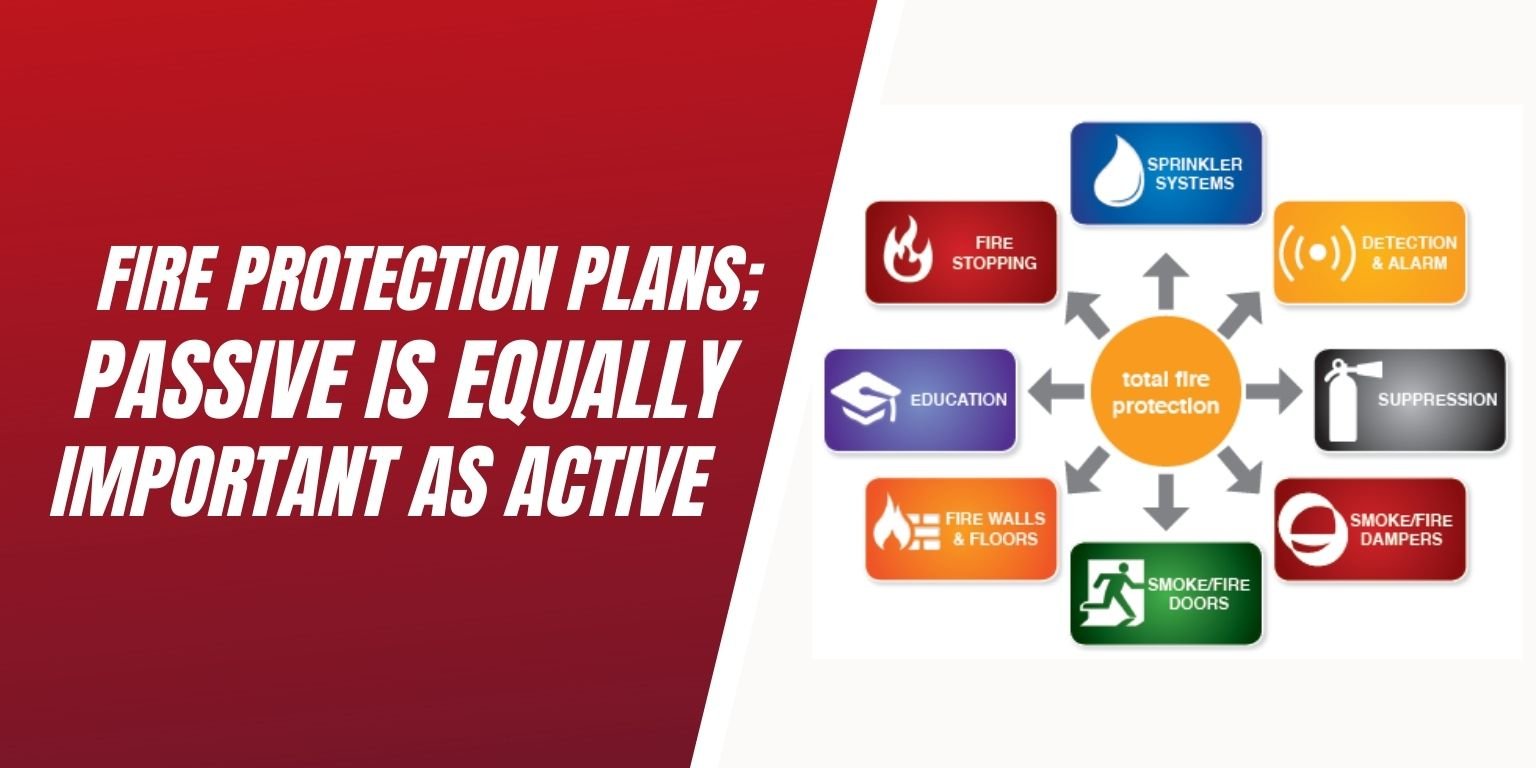
When it comes to fire safety, there isn’t one system that is more important than the other. Every fire safety system should be prioritized as they each have their own unique life-saving function that keeps a building and its occupants safe during a fire emergency. It can be an overwhelming task to take on as a facility manager as these systems are complex, requiring routine maintenance and inspection to ensure code compliance.
There are two types of fire protection plans within a facility; Active Fire protection and Passive Fire Protection. Each system having their own set of components with different functions to keep facilities safe during a fire. Facilities do not just pick one system over the other, each are important and critical to the overall safety of the building. Active fire protection and Passive fire protection work together during an active fire with the intent of keeping occupants safe and allowing a quick exit from the building.
The three elements of fire consist of Oxygen, Ignition and Fuel. Remove one of those elements and the fire is extinguished. In the event of a fire, the protection plan should include prevention, detection, suppression and containment.
Active Fire Protection Plan
An active fire protection plan system is designed to extinguish fire as soon as it is detected. This would include smoke detectors, building pressurization, fire alarms, sprinklers, exit signs and evacuation plans. These components are important as they alert building occupants that there is an active emergency happening within their building and to begin evacuating.
Unfortunately, Active fire protection systems are more apt to fail during an active fire. Sprinklers could malfunction due to lack of maintenance, inadequate water pressure or even complete lack of water supply due to the extreme events actively taking place within the facility at the time of fire. This is why having a Passive Fire protection plan in place is critical.
Passive Fire Protection Plan
A passive fire protection plan is designed to contain and compartmentalize smoke, fire and the toxic fumes produced from spreading throughout the building. This type of system not only strengthens the active fire protection system but also protects the property and minimizes damage.
Compartmentalizing is the life-saving feature of a passive fire protection system, hence why it is required by code. It divides space into smaller units which is where fire and smoke is contained during a fire.
Fire/Smoke Dampers, Fire barriers, smoke barriers and smoke partitions work to compartmentalize the building. When penetrating walls or partitions by ductwork and HVAC Systems, this is when we rely on fire dampers and smoke dampers to perform. These dampers will ensure fire and smoke do not continue to spread.
Fire and Smoke Dampers
Used in ducts to prevent the spread of fire within the duct-work through fire-resistance rated walls and floors. When temperature rises, the fusible link is melted which shuts the damper and block the spread of flames and smoke passing through.- Fire Damper - NFPA 80 – Section 19.4. Each damper shall be tested and inspected one year after installation. The test and inspection frequency shall then be every 4 years, except in hospitals, where the frequency shall be 6 years.
- Smoke Damper - NFPA 105 – Section 6.5. Each damper shall be tested and inspected one year after installation. The test and inspection frequency shall then be every 4 years, except in hospitals, where the frequency shall be 6 years.
Fire Barriers
- Used for many purposes, including separating occupancies, isolating hazardous areas, creating a horizontal exit, enclosing an exit, or creating a shaft. These barriers have a fire-resistance rating in hours, specified by the code.
Smoke Barriers
- Used to restrict the movement of smoke and usually have a fire-resistance rating specified in the code. In new healthcare occupancies, for example, the smoke barrier must have a one-hour-fire-resistance rating. In existing healthcare occupancies, the requirement is reduced to a half-hour fire-resistance rating.
- Required by the 1997 Version of the NFPA Life Safety Code and versions thereafter. “Must resist the movement of smoke and thereafter be maintained”
Smoke Partitions
- Designed to limit the movement of smoke and are not as substantial as smoke barriers. Smoke partitions generally do not have a fire-resistance rating and may terminate at a ceiling.
For additional information on passive fire protection or any other fire safety needs, contact our team of professionals today. You’re Safe with Us!

